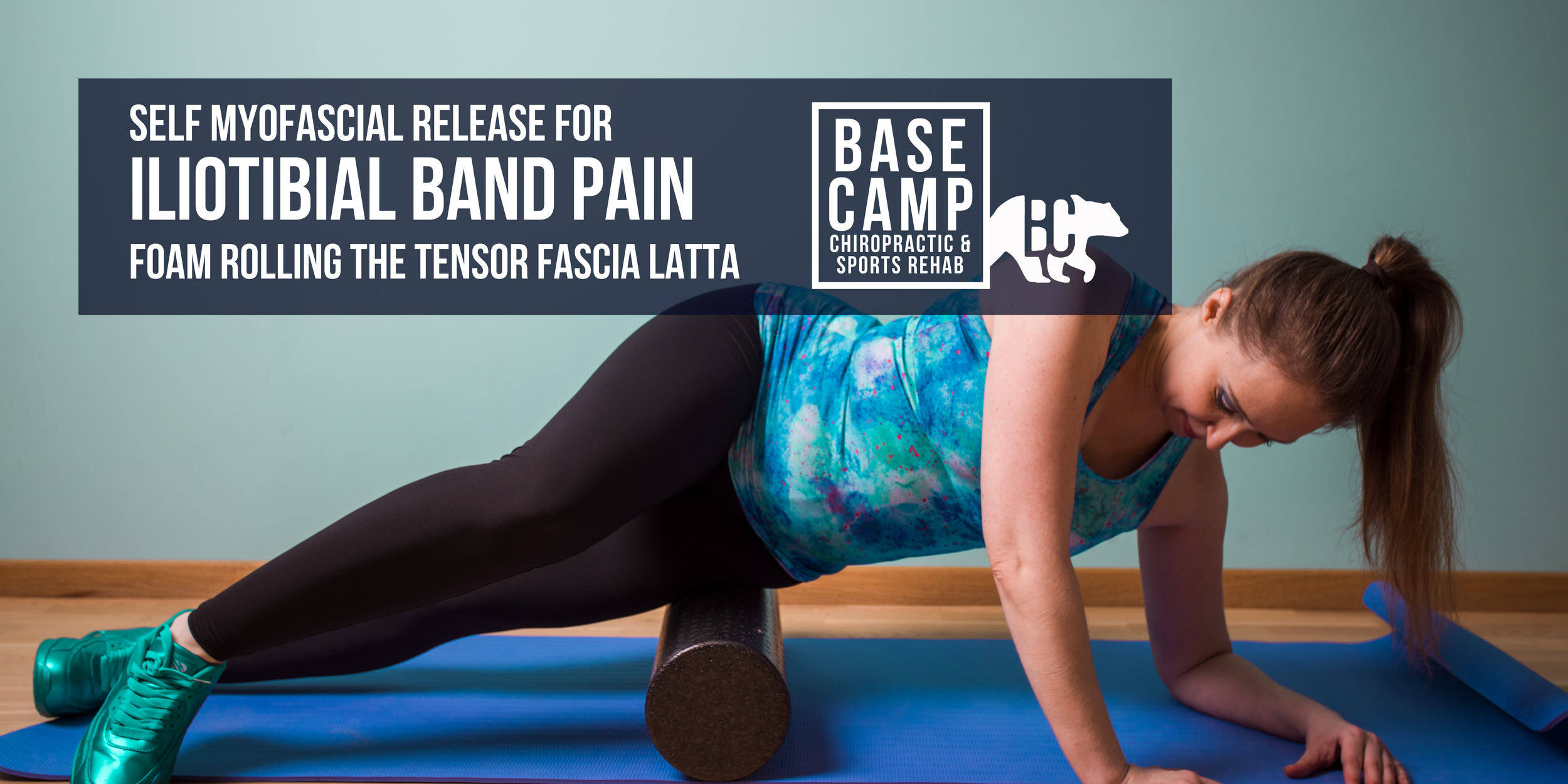
Blog
want to take a crack at your injuries from home?
Check out our blog posts and find the topics specific to you
Topics:
What is cluneal nerve irritation?
The cluneal nerves are a group of nerves that originate from the lower lumbar and upper sacral spinal nerves and provide sensory innervation to the skin overlying the buttocks and the low back region. The nerves consist of three branches: the superior, middle, and inferior cluneal nerves.
Cluneal nerve sensitivity refers to the level of sensitivity or reactivity of these nerves to various stimuli, such as pressure, touch, or temperature changes. When the cluneal nerves are irritated they become hypersensitive. When they are hypersensitive, even mild pressure or touch to the skin overlying the buttocks and low back region can cause pain or discomfort. This can be due to various reasons, such as nerve entrapment, nerve irritation or inflammation, or muscle tension that compresses or irritates the nerves.
Cluneal nerve sensitivity can also be influenced by underlying medical conditions such as herniated discs, spinal stenosis, arthritis, or sciatica. In some cases, the sensitivity may also be related to psychological or emotional factors such as stress, anxiety, or depression.
Treatment of cluneal nerve sensitivity typically involves addressing the underlying cause of the sensitivity. This may involve physical therapy, chiropractic, stretching and strengthening exercises, medication, or in some cases, surgical intervention. In addition, lifestyle changes such as weight management, stress reduction, and regular exercise can also help alleviate cluneal nerve sensitivity.
If you think you might be dealing with functional lumbar instability, book a free consult today.
What is functional lumbar instability?
Functional lumbar instability (FLI) is a term used to describe a condition where there is an excessive motion or lack of control in the lumbar spine during functional activities such as walking, standing, or bending.
It is a complex and often poorly understood condition that may be caused by a combination of factors including muscular weakness, imbalances, and inadequate coordination, as well as anatomical abnormalities, injuries, or degenerative changes in the spine.
People with FLI may experience low back pain, stiffness, and decreased function, especially during physical activities. They may also have difficulty maintaining a stable posture or controlling the movement of their spine. The symptoms of FLI can be exacerbated by activities that require increased or sustained spinal loading, such as lifting, bending, or twisting.
The diagnosis of FLI is often challenging, as there is no definitive test or imaging finding that can confirm the condition. It is typically diagnosed based on a combination of clinical signs and symptoms, as well as a thorough physical examination that includes testing of spinal stability and control. Treatment of FLI may involve a combination of exercises to improve spinal stability, manual therapy, and muscular strength, as well as education on proper lifting techniques and ergonomic modifications to reduce spinal loading. In some cases, surgical intervention may be necessary to address underlying structural abnormalities that are contributing to the instability.
If you think you might be dealing with functional lumbar instability, book a free consult today.
How to run injury free for life
One thing that I have learned after treating many runners is this: Runners love to run.
If I told you that you could run further, faster, and injury free, would you believe me?
Watch the video to learn how.
Author: Dr Mark Murdoch, Chiropractor and Co-Founder at Base Camp Chiropractic and Sports Rehab in Vernon, BC.
Mark Murdoch is a Doctor of Chiropractic with a Master’s Degree in Sports Medicine.
Contact: drmurdoch@basecampclinic.com
Instagram: Base.Camp.Doc
Iliotibial Band Pain
IT Band Syndrome is one of the MOST COMMON running injuries. But it does not have to keep you out forever. Learn about what causes it and how to manage it.
The Iliotibial Band (ITB) Pain is a show stopper.
It is the number one cause of lateral knee pain in runners (i.e. pain on the outside of the knee), and can not only end your running season, but it can also interfere with your everyday life.
If you have ever experienced ITB pain, you know how frustrating it can be.
In this article, we will cover what the ITB is, why it’s important, how it gets hurt, and some management recommendations.
What is Iliotibial band pain? And what even is the IT Band?
The IT Band is a length of connective tissue that connects your pelvis and your knee, running along the outside of the thigh. It helps make you more efficient while running by preserving the energy produced when your foot hits the group and reusing it for your next step.
Where the IT Band attaches at the knee can become irritated in many runners. This happens when you either increase your running volume too fast, spend too much time running downhill or run with a really narrow gait. It is particularly prevalent in trail runners because the trail forces our gait to narrow and we tend to spend a LOT of time running down hills (it IS my favourite part of trail running, after all!).
Once IT Band pain starts, it is really hard to get rid of, for a lot of reasons. Primarily though, it is because most runners follow this pattern:
Initial Injury happens
>Offload the tissue by decreasing your running volume.
>>Tissues lose capacity and your fitness goes down, but your pain decreases.
>>>Runner returns to their same activities as before, without properly rehabbing their knee.
>>>> Reinjury… and the cycle continues.
To prevent recurrent knee pain from the IT Band you HAVE TO BREAK THE CYCLE of Injury-Offload-Reinjury.
The good news is that IT Band pain doesn’t mean anything is DAMAGED. It just means that the knee is IRRITATED.
Management and Rehab of Iliotibial Band Pain
So… what should you do about IT Band Pain?
IT Band Pain management takes place in 3 Steps:
1) Calm Stuff Down
The nature of running injuries means that RUNNING VOLUME was the primary cause of the injury. This means that a temporary decrease in running is necessary to help calm down your symptoms, and your pain sensitivity. In the case of IT Band pain, this means avoiding running downhill. Some people can tolerate running on level terrain or using a treadmill on an incline. This helps keep your fitness up while rehabbing the injury.
During this phase we also use foam rolling, stretching, and manual therapy to decrease your pain and keep you as active as you can be. Here are some helpful videos:
Once things have calmed down (usually 2-6 weeks), then we can move on to Step 2 and Build Back Up.
2) Build Back Up
During this phase, we use exercises to increase your strength and tolerance to loading the knee. Here are some of my favourite exercises for rehabbing IT band pain:
Rear Foot Elevated Split Squat: VIDEO
Side Bridge: VIDEO
Box Step Downs: VIDEO
Lateral Lunge: VIDEO
3-Direction Calf Raises: VIDEO
This is just a short list of some of the things we use during the Build phase, but they are the foundation for most of the IT Band rehab programs I put together.
3) Bridge the Gap (getting Back to Running!)
This is both the most fun and most frustrating phase of IT Band rehab because you are going to want to jump back in and hit those trails you were running before the pain started.
This stage is different for each person, depending on their individual needs.
Stage 3 is a gradual process. How Stage 3 goes depends on how patient you can be. It is natural to want to jump back into running the same routes for the same distances at the same pace as you were before the injury. But what we want to do is gradually build your running volume back up over time instead.
If you can do that, not only will you be more successful at rehabbing your injury, you can actually become a faster and stronger runner than you were before the injury.
It is normal to have some bad days, where you feel like you are back to Stage 1. What we want to avoid is multiple consecutive days of flare-ups. Running volume management and terrain choice are essential at this stage.
Author: Dr Mark Murdoch, Chiropractor and Co-Founder at Base Camp Chiropractic and Sports Rehab in Vernon, BC.
Mark Murdoch is a Doctor of Chiropractic with a Master’s Degree in Sports Medicine.
Contact: drmurdoch@basecampclinic.com
Instagram: Base.Camp.Doc
Downhill Running and Knee Pain
Ever wonder why downhill running always leaves you so much sorer than flat or even uphill running?
Why running downhill makes you sorer than flat or uphill running.
Almost every experienced runner will agree: downhill running leaves you way sorer.
Have you ever wondered why?
There are two typed of soreness that people experience after running. These are muscular soreness and joint soreness.
Muscle Soreness
Muscular soreness is thought to be from damage to the muscle. This damage is microscopic and natural. Your body repairs this type of damage every day. When you are running downhill, your quads, hamstrings, and glutes primarily use a type of contraction called an eccentric contraction. Eccentric contractions are when the muscle is lengthening under resistance. This type of muscle contraction causes more damage than isometric (when the joint doesn’t move) or concentric contraction (when the muscle shortens).
Our muscles are MUCH stronger at eccentric contractions than concentric ones. This is why your legs can handle the force of downhill running, which can reach 7x our body weight in a single step.
This increased force also contributes to more muscle damage, and, you guessed it, more soreness.
Joint Soreness
Joint soreness has a variety of causes but often happens because of cartilage compression due to impact or swelling after activity.
The cartilage in our knees relies on water to absorb the impact of each step. When our cartilage is damaged, the knee’s ability to store water and manage that impact is lessened, and we get more inflammation and swelling.
This can happen because of prolonged and repetitive impact (like ultra running) or shorter, high-impact running (like downhill running).
When it comes to downhill running, we are dealing with much higher forces on the joint, and that can lead to soreness.
What does this mean for you, as a runner?
Neither type of soreness automatically means lasting damage to your muscle or joints, but it is important to respect the healing process. If you are coming off of a long run with a lot of hills, it is a good idea to stick to a flat run or a shorter run.
If you have had knee issues in the past and are looking to get back into running, you need to keep this in mind. It does not mean that you cannot run hills, but it does mean that you should respect the stress that downhill running places on your knees and make sure you are taking the time to recover from them. BOTH of these types of soreness are often delayed a few hours, or even a day or so, after activity, so you won’t even know the impact a run has had on you right away.
This also has important implications for me when I am working with runners who have a history of knee pain. Often we use flat or even mild-grade uphill running during the rehab process. I often have my patients stick to walking the downhill, or avoiding the downhill all together until we have built up the strength and tolerance of the legs and knees to the demands of downhill running.
Author: Dr Mark Murdoch, Chiropractor and Co-Founder at Base Camp Chiropractic and Sports Rehab in Vernon, BC.
Mark Murdoch is a Doctor of Chiropractic with a Master’s Degree in Sports Medicine.
Contact: drmurdoch@basecampclinic.com
Book a free Consult with Dr Murdoch: book here
Instagram: Base.Camp.Doc
Disclaimer: This blog is intended for general informational purposes only and is not intended for the delivery of medical advice. No doctor/patient relationship is formed. The use of information on this blog or materials linked from this blog is at the user's own risk. The content of this blog and website is not intended to be a substitute for medical advice.






















